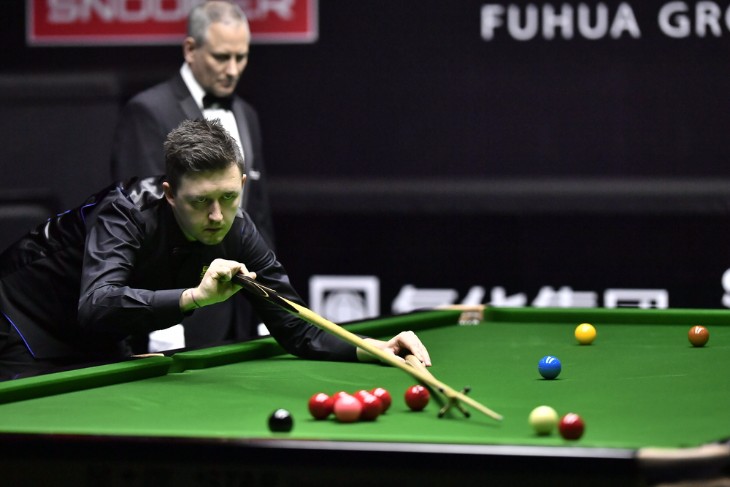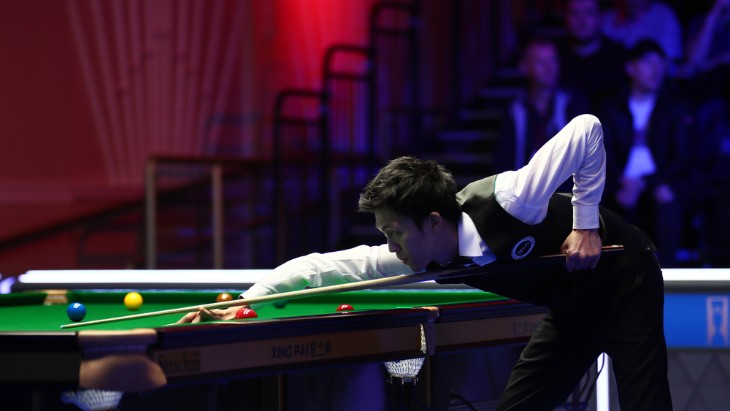Historical Overview of Snooker
Snooker traces its origins to the latter half of the 19th century in India. Initially devised by British Army officers stationed in the colonial era, the game found its roots in the innovative fusion of traditional billiards with elements of a pyramid pool.
Origins and Evolution
The name "snooker" itself holds a historical anecdote, attributed to the British military slang for a first-year cadet. Its formal introduction to the world stage occurred in the early 20th century, primarily gaining traction within the British Isles before spreading across the globe.
As the sport evolved, the 1920s witnessed the establishment of the World Professional Billiards and Snooker Association (WPBSA), formalizing rules and organizing professional tournaments. The post-World War II era marked a surge in snooker's popularity, especially in the United Kingdom, with the emergence of televised championships and the rise of celebrated players like Joe Davis and Fred Davis.
Global Expansion and Popularization
The 1960s and 1970s heralded a new era for snooker, marked by the advent of colour television and the charismatic prowess of players like Ray Reardon and Alex Higgins. The introduction of the World Snooker Championship in 1969 further solidified the sport's status and fueled its global expansion.
Throughout subsequent decades, snooker witnessed dynamic shifts in its competitive landscape, marked by the dominance of players like Steve Davis in the 1980s and the era of Stephen Hendry in the 1990s. The sport's appeal transcended borders, captivating audiences worldwide and fostering a new generation of talented cue artists from various corners of the globe.
Modern Era and Contemporary Significance
As the 21st century unfolded, snooker continued to evolve, embracing technological advancements in broadcasting, equipment, and training methodologies. The sport garnered a devoted following, with major tournaments like the UK Championship, the Masters, and the World Championship captivating enthusiasts and showcasing the game's depth and skill.
In this contemporary landscape, snooker has become a blend of tradition and innovation, embracing analytics, technological aids, and a diverse pool of international talent. The sport stands as a testament to endurance, precision, and strategic prowess, offering a compelling narrative that intertwines history with the pulse of modern sports entertainment.
Understanding Snooker Analytics
Understanding snooker analytics involves delving into the intricate data collected during matches to derive insights into player performance, strategic choices, and overall gameplay.
1. Components of Snooker Analytics
- Shot Accuracy: Analyzing the success rate of potting balls, measuring a player's precision and consistency.
- Break Building: Studying the ability to construct high-scoring sequences through successive pots, focusing on the efficiency of these breaks.
- Safety Play: Assessing a player's skill in executing strategic shots aimed at snookering opponents, thereby gaining tactical advantage.
- Decision-Making: Evaluating choices made during different game situations, including shot selection, positional play, and risk assessment.
2. Data Collection Methods
- Manual Recording: Historically, snooker statistics were gathered manually, noting down shot successes, break lengths, safety shots, etc.
- Technological Advancements: In recent times, technological innovations have introduced automated systems utilizing cameras and sensors to track and record player movements and shot outcomes.
3. Tools and Technology
- Shot Tracking Systems: Utilizing cameras and tracking software to follow ball movement, player positioning, and shot outcomes.
- Data Analytics Software: Applications designed specifically for snooker analytics, allowing for comprehensive data analysis and visualization.
- Virtual Reality and Simulations: Advancements in virtual reality technology enable players to simulate shots, strategies, and game scenarios for analysis and practice.
4. Key Metrics in Snooker Analytics
- Pot Success Rate: Percentage of successful shots potted out of attempts, indicating a player's accuracy.
- Average Break: Average score achieved per visit to the table, highlighting a player's ability to construct significant breaks.
- Safety Success: Ratio of successful safety shots played, showcasing a player's defensive capabilities.
- Frame Winning Probability Models: Predictive models based on historical data to estimate the likelihood of winning a frame given specific game situations.
5. Application in Player Development
- Training and Skill Enhancement: Analytics assist in identifying weaknesses, allowing players to focus on specific aspects for improvement.
- Strategic Insights: Understanding opponents' tendencies and developing counter-strategies based on statistical analysis.
- Performance Evaluation: Objective assessment of a player's performance over time, aiding in setting benchmarks and goals for improvement.
6. Challenges and Limitations
- Data Accuracy: Ensuring precise data collection and avoiding subjective interpretation.
- Interpretation Bias: The potential for misinterpretation or bias in analyzing data without considering contextual factors.
- Ethical Considerations: Maintaining player privacy and ethical use of data in analytics.
Snooker analytics, while offering valuable insights, still grapples with challenges. However, its integration into the sport continues to evolve, promising a deeper understanding and enhancement of players' skills and strategies.

Key Statistical Metrics in Snooker
Key statistical metrics in snooker offer insights into player performance, strategic abilities, and overall efficiency during a match.
1. Pot Success Rate
- Definition: Pot success rate refers to the percentage of successful pots made by a player out of the total attempted shots.
- Significance: It measures a player's accuracy and consistency in pocketing balls. A higher pot success rate often indicates superior cueing and positional play.
2. Average Break
- Definition: The average break signifies the average score accumulated by a player during each visit to the table.
- Significance: It reflects a player's ability to build substantial breaks by chaining together successful shots. A higher average break signifies a player's capability to capitalize on scoring opportunities.
3. Safety Success Rate
- Definition: Safety success rate pertains to the percentage of successful safety shots played by a player.
- Significance: It showcases a player's proficiency in executing defensive shots, creating strategic advantages, and controlling the game's tempo by forcing opponents into difficult positions.
4. Frame Winning Probability Models
- Definition: These models use historical match data to estimate the likelihood of winning a frame given specific game situations.
- Significance: Frame-winning probability models provide predictive insights, allowing players to strategize and make decisions based on statistical probabilities, especially in critical moments of a match.
5. Shot Time Analysis
- Definition: Analyzing the time taken by a player to execute shots.
- Significance: Shot time analysis can reveal a player's composure, decision-making speed, and confidence under pressure. It might indicate rushed shots or deliberate, calculated play.
6. Ball Control and Positional Play
- Definition: Assessing a player's ability to control the cue ball's position after each shot, achieving optimal positioning for subsequent shots.
- Significance: Effective ball control influences a player's ability to continue their break, play safe when necessary, and maximize scoring opportunities.
7. Consistency Metrics
- Definition: Metrics that evaluate a player's consistency in performance over multiple frames or matches.
- Significance: Consistency metrics help identify trends in a player's performance, highlighting areas of strength and weakness over extended periods.
8. Match and Frame Winning Percentages
- Definition: The percentage of matches or frames won by a player in various tournament settings.
- Significance: These percentages provide an overall assessment of a player's competitiveness and success rate in different contexts and against diverse opponents.
Role of Analytics in Enhancing Performance
The integration of analytics in snooker not only aids players in refining their skills but also contributes to the overall evolution and strategic depth of the sport, making it a more nuanced and captivating experience for both players and spectators alike.
1. Player Development and Training
- Identifying Weaknesses: Analytics help pinpoint specific areas where players might struggle, whether it's pot success rate, break building, or safety play.
- Tailored Training Programs: Data-driven insights allow coaches to design personalized training regimens to address individual player weaknesses and enhance strengths.
2. Tactical Insights and Strategy Formulation
- Opponent Analysis: Studying opponents' historical data provides valuable insights into their playing styles, preferred shots, and weaknesses, enabling players to adapt strategies accordingly.
- Shot Selection Optimization: Analytics aid in determining optimal shot selections based on statistical probabilities, considering factors such as success rates and positional play.
3. Performance Evaluation and Improvement
- Objective Assessment: Data-driven analysis provides an objective assessment of a player's performance, allowing for comparisons over time and against various opponents.
- Goal Setting and Monitoring: Players can set benchmarks based on statistical metrics and track their progress, facilitating continuous improvement.
4. Decision-Making During Matches
- In-Game Strategy: Real-time analytics or prior statistical analysis aids players in making strategic decisions during matches, considering probabilities and opponent tendencies.
- Adaptability: Insights gained from analytics assist players in adapting their gameplay based on the unfolding dynamics of a match.
5. Enhanced Training Environments
- Simulation and Virtual Reality: Technological advancements allow players to simulate match scenarios and practice shots in virtual environments, aiding in decision-making and muscle memory development.
6. Mental Aspect of the Game
- Confidence Building: Objective data analysis helps players build confidence by identifying strengths and improvements, potentially alleviating performance anxieties.
7. Coaching and Support Staff
- Strategic Guidance: Coaches and support staff can utilize analytics to offer strategic guidance, tactical advice, and tailored feedback to players.
8. Fan Engagement and Broadcasting
- Enhanced Viewer Experience: Analytics-driven insights add depth to commentary, offering viewers a deeper understanding of players' strategies and decision-making.

Future Trends and Innovations
1. Advanced Data Collection Methods
- Sensor Technology: Continued developments in sensor-based technology could offer more precise and real-time data collection, capturing nuances in player movements and shot dynamics.
- AI-Powered Analysis: Integration of artificial intelligence (AI) algorithms for instantaneous analysis, providing immediate insights during matches.
2. Predictive Analytics and Machine Learning
- Predictive Models: Refinement of predictive models that forecast match outcomes or players' performance based on historical and real-time data.
- Player-Specific Algorithms: Tailoring analytics tools to individual player styles and tendencies for more accurate predictions and personalized insights.
3. Virtual Reality (VR) Training
- Immersive Training Environments: Further development of VR simulations offering realistic practice scenarios, aiding in decision-making and muscle memory development.
- Interactive Coaching Platforms: VR platforms designed for remote coaching sessions, allowing coaches to provide real-time guidance and analysis from a distance.
4. Biometric and Health Data Integration
- Player Wellness Tracking: Integrating biometric data to track players' physical and mental states during matches, potentially influencing performance analysis and training routines.
- Fatigue Management: Analyzing biometric data to manage player fatigue levels, and optimizing training schedules and rest periods.
5. Enhanced Viewer Engagement
- Interactive Analytics for Viewers: Providing viewers with access to real-time analytics and insights during broadcasts, enhancing the viewing experience and understanding of the game.
6. Ethical Considerations and Data Privacy
- Ethical Frameworks: Development of ethical guidelines ensuring responsible use of player data, maintaining privacy, and transparency in analytics applications.
7. Collaboration and Integration
- Cross-Sport Insights: Exploration of analytics methodologies from other sports and their potential application in snooker for new insights and strategies.
- Collaboration with Academia and Tech Industry: Partnering with academic institutions and tech companies to drive innovation in analytics tools and methodologies.
8. Global Reach and Accessibility
- Wider Adoption: Encouraging wider adoption of analytics tools and methodologies across different levels of snooker, from amateur to professional circuits.
Summary
In summary, snooker analytics is becoming a game-changer, driving the sport towards a new era characterized by precise, strategic, and data-informed decision-making. This integration of data-driven insights is offering players, coaches, and fans a more profound understanding of the game's complexities.
For more information:




.webp)


 (1).webp)




















